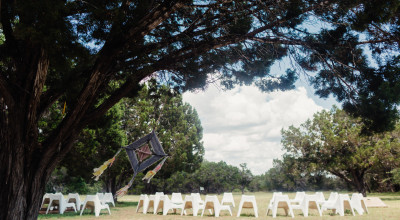Art Therapy and Addiction – How It Can Help You
March 26th, 2019
Standing at the precipice of the 12 Step Program feels daunting for many individuals struggling with addiction. However, taking that first step sometimes means embarking on a journey that is as creative as it is healing, through art therapy. Medical practices have long used the creative fields, including art therapy, music therapy, sound and light therapy and sensory therapy. Addiction treatment has commonly used art therapy.
How and Why It Works
Science has proven the benefits of creative and holistic therapies in a host of clinical situations, both physical and psychological. Addiction is an accepted medical condition, so it is no surprise that the use of art therapy often has amazing results for some individuals in treatment. So, how does it work, scientifically speaking? Actually, art therapy often works because it helps to uncover the underlying causes of addiction battles, as well as relapse tendencies. Making art helps people express emotions without speaking.
When individuals in treatment embark on a journey with art therapy, they feel free to express difficult emotions and stories through art that they may not feel comfortable expressing verbally to a counselor, doctor, or even themselves. Art creates a welcoming space for release, and can reveal root causes for addiction, such as abuse, depression, and past trauma. Art therapy creates a safe and private environment for creative expression that helps the patient to process what he or she is going through, which can expedite healing. In some cases, this sheds light on crucial elements that aid in recovery.
Art Therapy and Relapse Prevention
Art therapy and other holistic therapies are not only effective in initial treatment, but they can also be effective in relapse prevention. What an individual learns about himself or herself through the expression of art often reveals triggers, such as past experiences or suppressed emotions. When these triggers are known, they are also more avoidable. This aids in tailoring a treatment plan right for the individual, based on their unique experiences and expressions. In addition to visual art, experiences with music therapies and types of physical therapies can offer similar benefits.
Other Benefits of Art and Holistic Therapies
While it is true that some people in treatment or recovery have profound revelations about their past, triggers, or overall journey through art therapy, not everyone has these experiences. For some, it is merely a pleasant activity. This doesn’t mean that the therapy has no merit. Participating in the arts is good for everyone, especially those battling addiction. Instead of using substances to create a feeling of elevation or release, art can create those same feelings. Being creative releases feel-good chemicals in the brain, much the same as dangerous substances. Replacing the urge to use with the urge to create something is a healthy habit that provides joy, fulfillment, and welcome distraction.
Main Types of Art Therapy
Art therapy is a vast field with few creative limits. Common activities include painting, sculpting, pottery, drawing, poetry, acting, spoken word and dance. The principal types of art therapy used in the treatment of addiction fall into three categories:
- The Gestalt Method. This technique provides the therapist a way to reach deeper into the experiences of the patient. The project at hand is often a jumping-off point for starting a deeper conversation. For example, the art therapist may ask the individual to create something freely, then to describe what it means and what led them to create it. As mentioned above, this type of conversation often sparks discoveries about the root causes of addiction, as well as triggers.
- The Active Imagination Method. Active imagination uses a given piece of art as a starting point for free associations. This method creates a less obvious portal into a deeper knowledge of self. With these activities, individuals often discover buried emotions that shed light on the path to recovery.
- Third Hand Approach. This method, often suitable for individuals who are willing to work on a deeper level with their therapist, allows the patient to control the artistic vision while the therapist also contributes to the piece and guides the process. It requires openness between the two individuals, as the therapist guides the process to a place of potential breakthrough or progress. Much as with the aforementioned methods, this process can lead to a clarification of the causes of addiction.
What Types of Therapies Does Windmill Wellness Ranch Offer?
Windmill Wellness Ranch offers many physical and creative-leaning therapies and activities, including but not limited to:
- Outdoor activities, such as hiking on over 75 acres of , swimming and wading in nearby creeks and rivers, and playing basketball and volleyball on the ranch.
- Yoga, which creates a heightened awareness of self, while also expediting the detoxification of the body through perspiration and increased oxygen.
- Personal training, which uses physical fitness to create positive chemicals in the brain, while also expediting detoxification and promoting overall health and well-being.
- Massage, which provides relaxation and encourages healing through therapeutic touch.
- Creative activities, which include but are not limited to art therapy.
Our Rock Painting Project
One way that individuals past and present leave a mark on the ranch is through art therapy. On the beautiful expanse of nature and acreage, the ranch has a rock path with rocks painted with personal meaning by individuals attending the program. Not only do these projects promote the positive benefits of artistic therapies, they also beautify the property and create powerful memories. The designs and messages left by individuals who have completed the program provide encouragement to those currently going through the steps.
Windmill Wellness Ranch aims to provide more and more activities such as this, while also tailoring artistic activities to the individual in treatment. If a person seeking treatment is inherently artistic or interested in one field of the arts, the staff strives to accommodate that journey, whether that includes dance, pottery, spoken word, or any other form of creative expression.
Windmill Wellness Ranch Mission
The overall experience of Windmill Wellness Ranch is holistic and welcoming, creating a pathway to freedom from addiction. Though going through the 12 steps is never easy, it does not have to be a drab, detached experience. The ranch incorporates the use of traditional clinical approaches, but the overall experience is far from clinical. Art therapy is an extension of the mission of the ranch to provide fulfilling, productive, and enlightening activities. In addition, for some it plays a key role in recovery. To learn more about the journey to recovery and freedom here at the ranch, give us a call today.


![Transcranial Magnetic Stimulation [TMS] for Addiction and Mental Health: A Promising Treatment Gets Even Better](/img/containers/main/img/3m6a1958.jpg/135e554cf4e27791af54c49c170ea215.jpg)